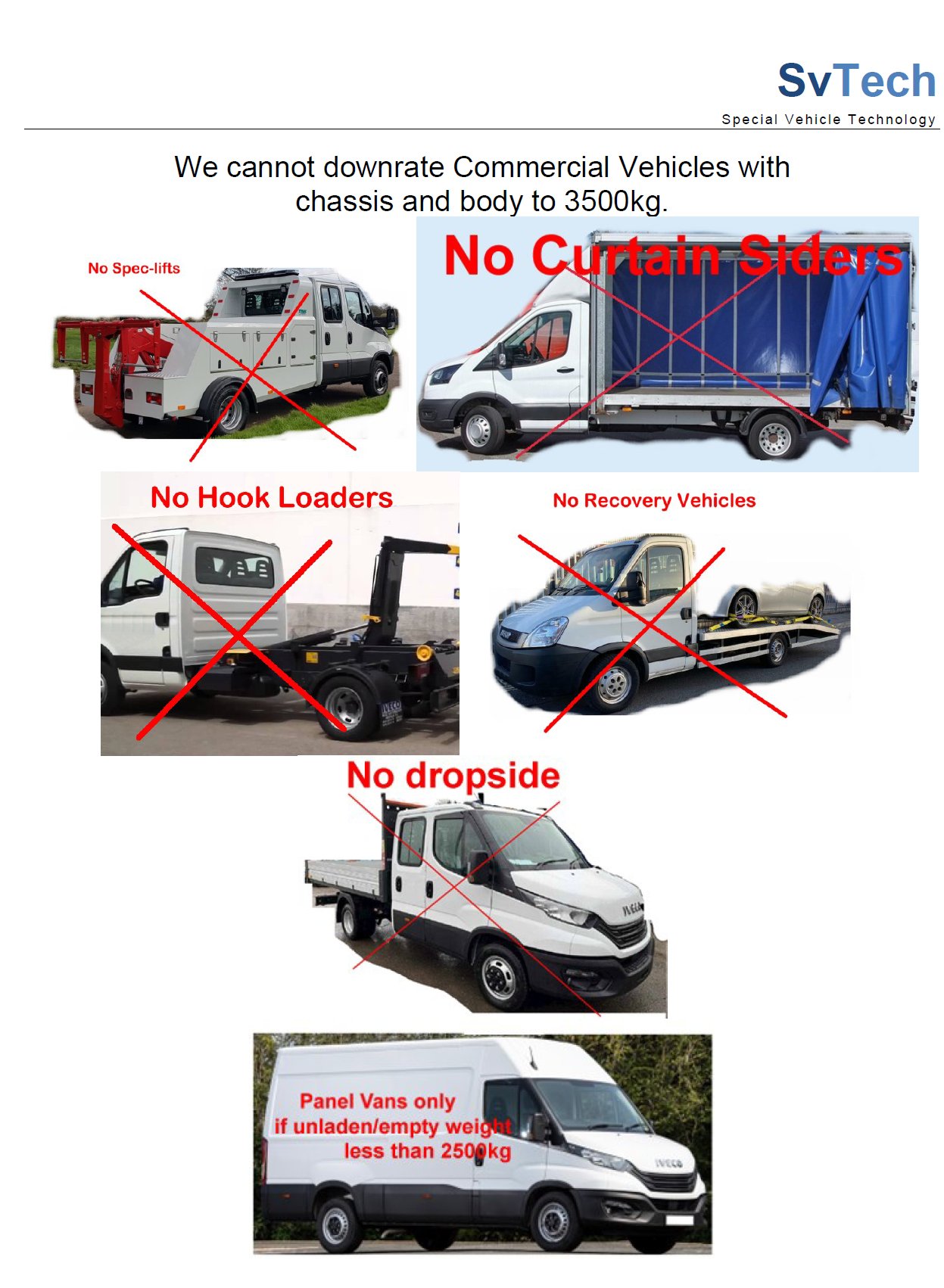![]() As well as replating a vehicle to legally carry heavier loads, owners can also reduce the legal maximum weight their vehicle can carry. This is called downplating and it normally occurs for one of two reasons; either licence restrictions applying to drivers turning 70 and those not having the C1 category on their licence, or for Low Emission purposes whereby the owner wants to reduce their payment amount by reducing payload allowance, thus dropping into a cheaper category.
As well as replating a vehicle to legally carry heavier loads, owners can also reduce the legal maximum weight their vehicle can carry. This is called downplating and it normally occurs for one of two reasons; either licence restrictions applying to drivers turning 70 and those not having the C1 category on their licence, or for Low Emission purposes whereby the owner wants to reduce their payment amount by reducing payload allowance, thus dropping into a cheaper category.
In the past the DVSA required a physical to downrate a vehicle and this was usually by reducing the suspension travel by packing out the bump-stops with a “packer kit”. However, the DVSA now realises that a physical change doesn’t have to happen and instead the alteration is made on the Notifiable Alteration procedure – VTG10.
Essentially, SvTech is able to downplate 10-12 tonnes HGVs to 7500kg, so that non-HGV licence holders can drive them on their normal licence (this only applies to those drivers who passed their test before 1st January 1997).
Commercial vehicle downrates to 7500kg require that the bodied weight of the vehicle is no heavier than 5500kg, unless specially equipped with fixed equipment.
Start by having your vehicle weighed on a public weighbridge and, if 5500kg or less, contact us for further information. – Quick Enquiry
Downrates to 3500kg have become more popular as more ‘younger’ drivers, who passed after 1997, are capped to this weight.
For commercial vehicle downrates the DVSA rules have been tightened up in the challenge of stopping LGVs being overloaded.
The new rules for plated vehicle downrates to 3500kg are as follows:
– Panel vans (not Lutons) with a single integral body, must have a minimum payload of 1000kg.
This means the unladen/empty weight of the vehicle must not exceed 2500kg.
– Commercial chassis with body.
Downrates to these vehicles must now be applied for through the DVSA directly and not a 3rd party.
As such SvTech no longer offer support for chassis cab downrates that are subject to the DVSA plating and testing scheme, and you will need to apply directly. If your vehicle is not a DVSA plated and tested vehicle. i.e. previously minibus/ex blue light etc. then please complete the quick enquiry form
Please see the DVSA website for further information
DVSA VTG10
You will need to provide DVSA with a weight ticket and that this meet with their requirements for minimum payloads. Sorry we unable to advise what this will need to be as it is dependent upon the application of use as well as a review by the DVSA.
Important information about your weight ticket – please read Weighing Guidance Sheet
For motorhome downrates please see the motorhome page for this – Motorhomes


